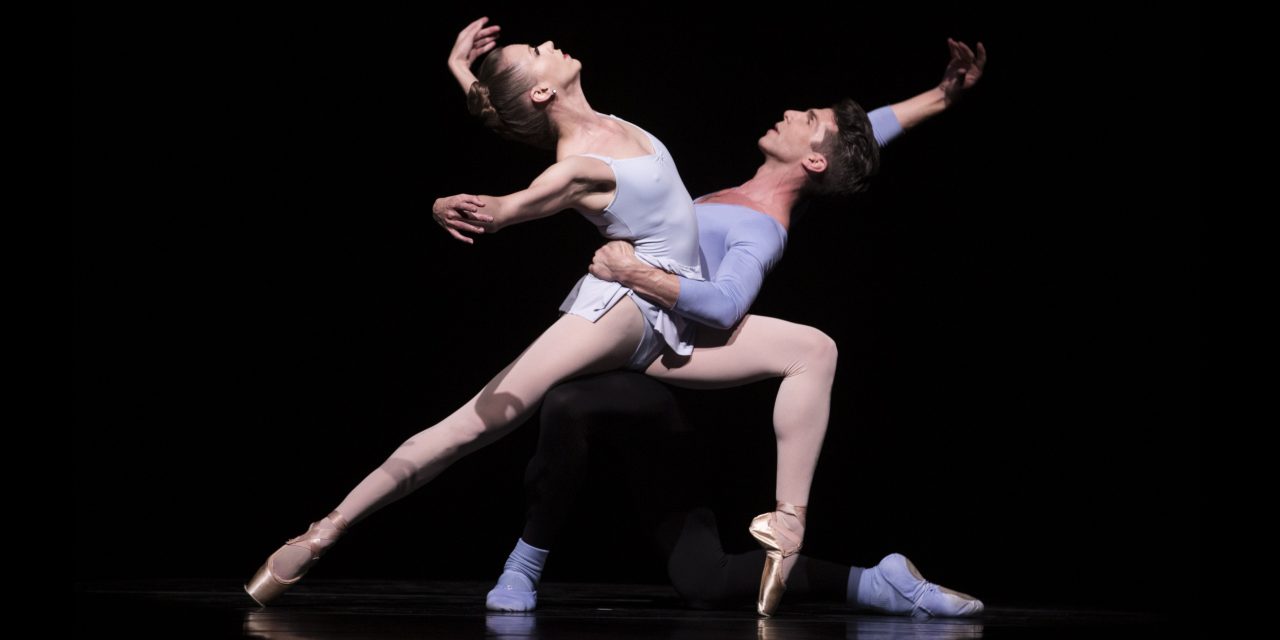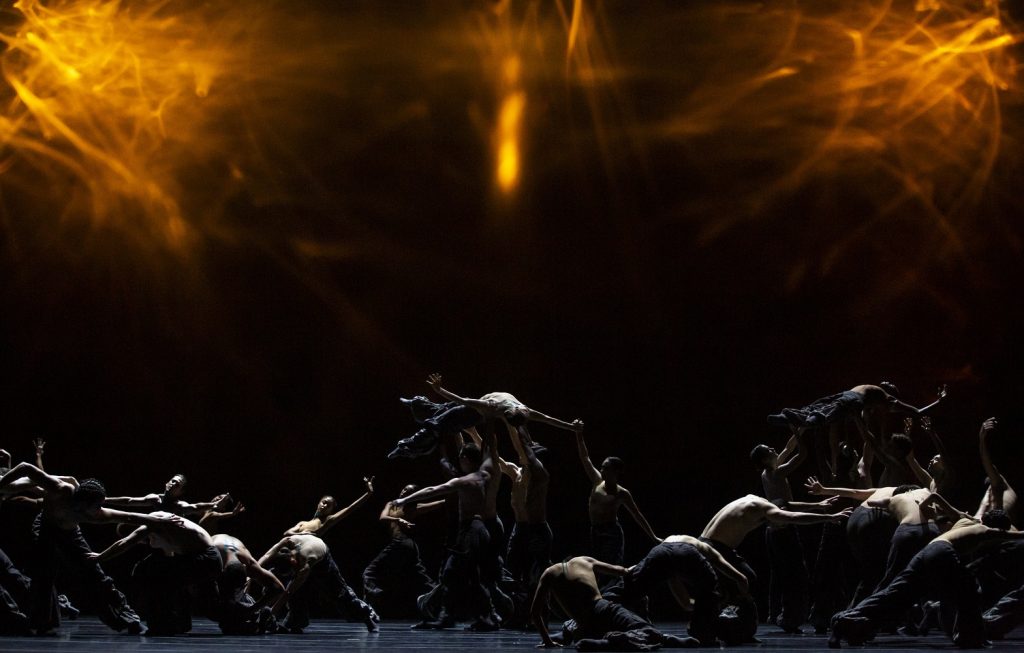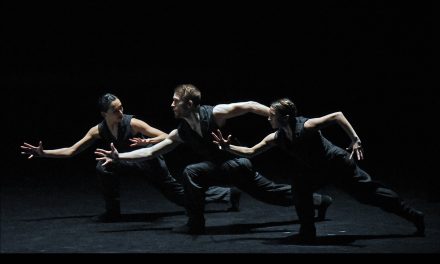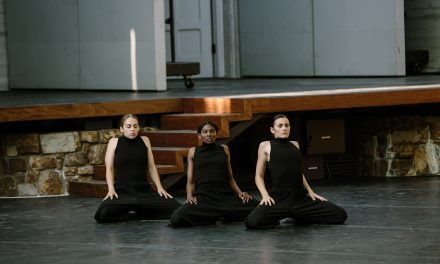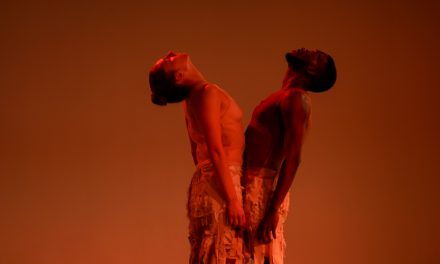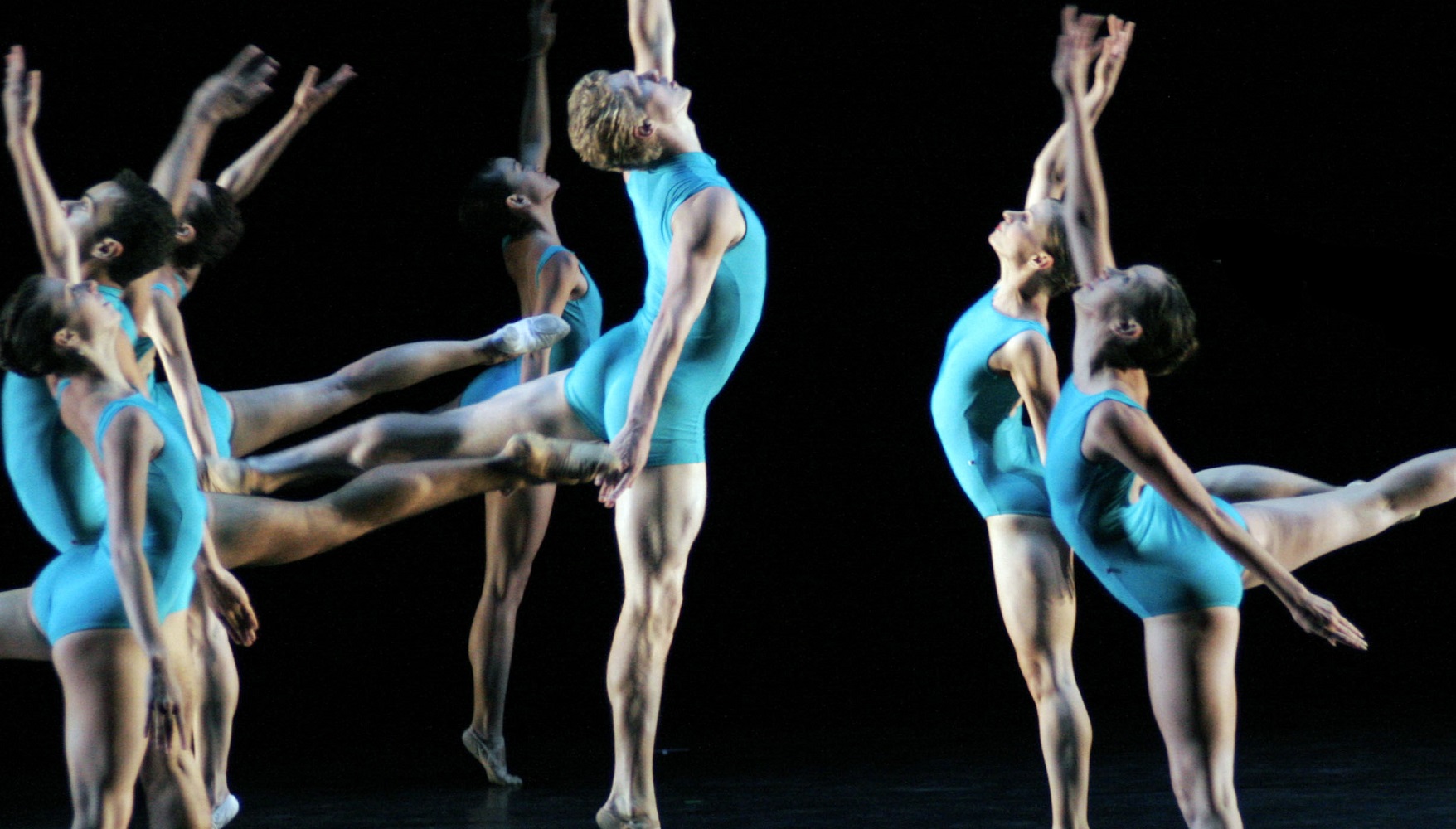The interesting thing about the classical ballet companies of today is that they are capable of so much more and often soar above and beyond our expectations. This was ever present in Pacific Northwest Ballet’s 50th Anniversary presentation of “The Season’s Canon,” streaming November 17th through the 22nd. Beginning with Dwight Rhoden’s “Catching Feelings,” George Balanchine’s “Duo Concertante” and Crystal Pite’s “The Seasons’ Canon,” the dance movement ran the gamut from classical to contemporary, modern to lyrical, all of it masterfully performed by the company members of PNB. Notably PNB also carries it’s own first class orchestra, which brought this 50th Anniversary celebration to new heights.
Founding Artistic Director and Resident Choreographer of Complexions Contemporary Ballet, Dwight Rhoden premiered his new work for PNB “Catching Feelings” on November 4, 2022. The Baroque music “Works For Strings” by J.S. Bach: Peter Greyson and Johan Ullen after J.S. Bach, reuses it’s motifs and themes from which Rhoden has created this complex ballet. Rhoden has made use of the musical repetition in a myriad of sequences. From duos to quartets, trios to a full stage of dancers, he answers the intricacies of the insistent score. This work is the essence of a “modern ballet” in its use of both classical and contemporary movement. However, Rhoden’s work though interesting, can become mechanical and with his often-flat staging can resemble a difficult classroom exercise. Working hard the dancers have little time to breathe or to imbue the movement with the extra reach that would make the music and the dance become one. Rhoden’s choreography must be done with absolute precision to accomplish his vision of exactness, which leaves little room for expression. Still the dancers bring their wonderful technique to this as always. Of particular interest were some lovely duets laced throughout the piece. Well danced, each couple brought a unique spin to their moment in the light. Everything is in place for this piece to be something exceptional. Perhaps, Rhoden might listen to the nuance of the music, slow down and let the dance develop more organically.
The stylishly simple costumes, in shades of red, are by Christine Darch. The lighting as designed by Joey Wallis is moody and dark with aspects of brightness spotlighting the gorgeous line of the dancers, adding another layer of intrigue to Rhoden’s too long but thought provoking new work. The dancers are Elle Macy, James Kirby Rogers, Elizabeth Murphy, Lucien Postlewaite, Angelica Generosa, Jonathan Batista, Cecillia Illiesiu, Luther DeMyer, Amanda Morgan and Christopher D’Ariano.
The PNB Orchestra played brilliantly with featured violinist, Michael Jinsoo Lim and cellist Page Smith.
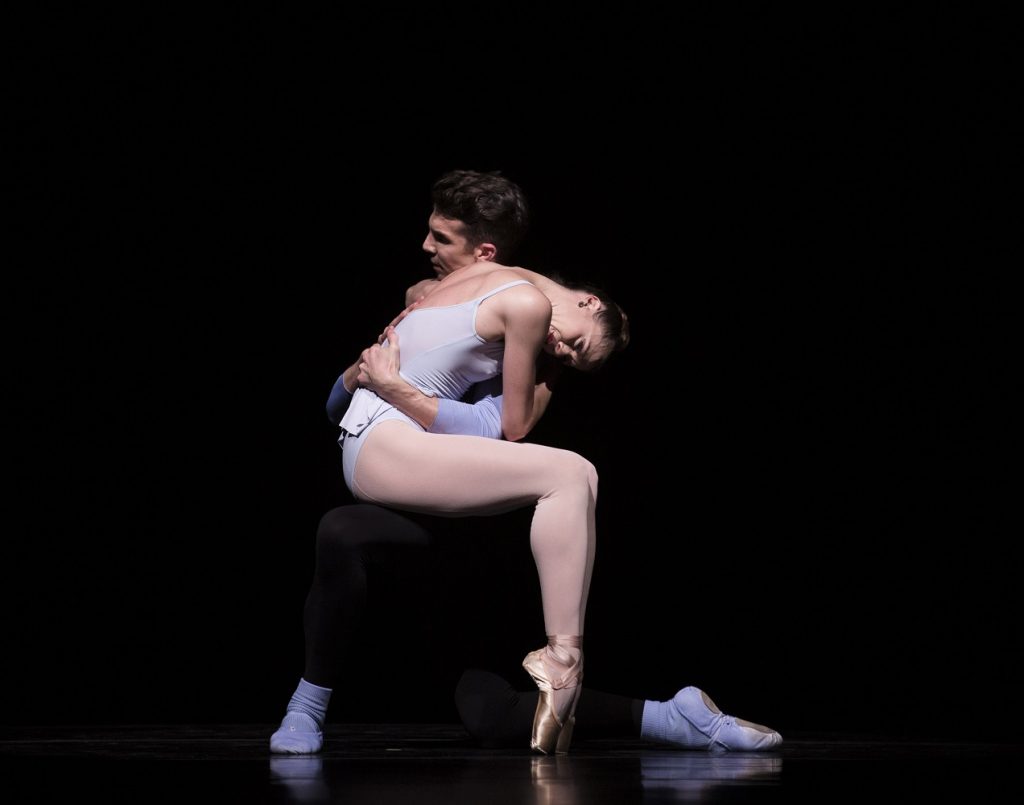
Pacific Northwest Ballet principal dancers Lesley Rausch and Lucien Postlewaite in “Duo Concertant”, choreography by George Balanchine © The George Balanchine Trust – Photo © Angela Sterling.
George Balanchine’s “Duo Concertante” shines, as brightly today as it did upon it’s premier fifty years ago. The curtain rises on two musicians at their instruments; superb pianist, Christina Siemans and the virtuosic, Michael Jinsoo Lim on violin, while Principle Dancers, Lesley Rausch and Lucien Postlewaite, stand by listening intently to the compelling first movement of “Duo Concertante” by Igor Stravinsky. This quiet beginning supports Balanchine’s statement “You must first listen to the music and really hear and then you will understand it and appreciate it.” When the dancers take the stage you can see from the start just how well the music and the steps are integrated. Intentionally simple choreography frees the performers to infuse the dance with fun and playfulness. When the music becomes languid and romantic, the dancers mirror this mood perfectly in a gently beautiful pas de deux. The lively fourth section is just that, lively and amusing, after which the bright lights fade to black in a false ending. Therefore when a pinpoint spot picks out Rausch’s face or her reaching hand and the violin sings its melancholy tune, it’s as if we are voyeurs to a sad farewell. Postlewaite and Rausch make the most of this sublime moment and I was transported again by the genius of Balanchine and his art. The excellent lighting was by Ronald Bates recreated by Perry Silvey and the simple costumes were by Holly Hynes.
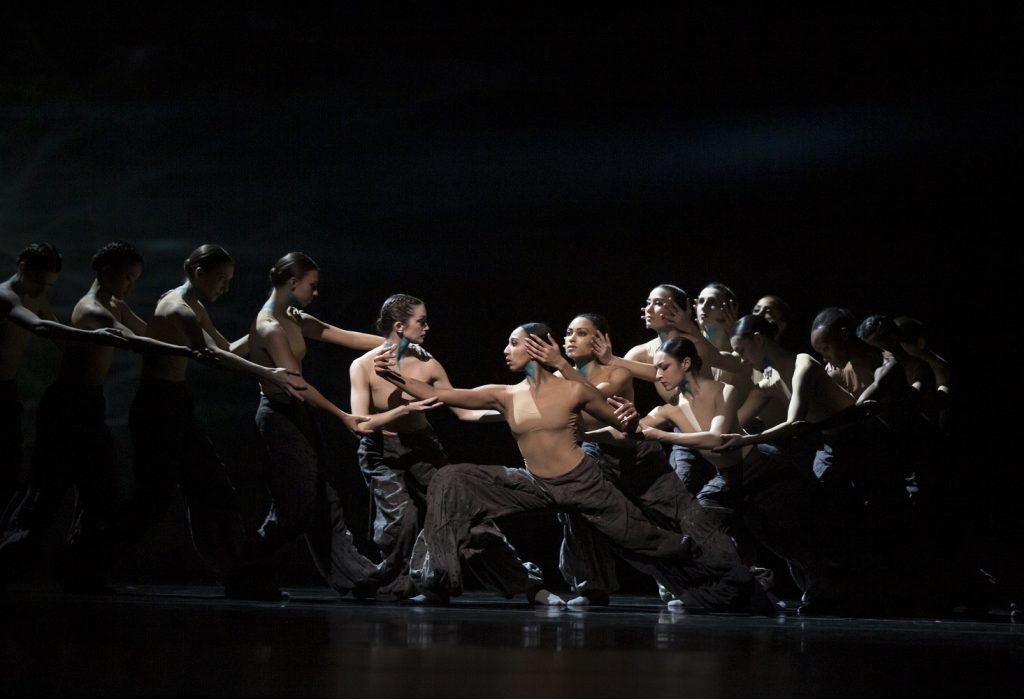
Pacific Northwest Ballet soloist Amanda Morgan (center) with company dancers in Crystal Pite’s “The Seasons’ Canon” – Photo © Angela Sterling
Wild, Inventive, scary and stunning are just a few of the words that can be applied to Crystal Pite’s “The Seasons’ Canon,” an ode to nature in all its catastrophic glory. This piece by Pite was premiered in 2014 and was an instant hit in its ingenious newness. Now eight years later her work has given ideas and the freedom to “try anything” to choreographers worldwide and we are seeing more and more work that resembles “Pite.” Good or bad this is the reality. She is a voice of her generation, an innovator and perhaps a genius.
The music recomposed by Max Richter from Antonio Vivaldi ‘s “The Four Seasons” begins with “Spring.” An undulating ocean of bodies moves in waves of anticipation. Heads nod up and down, perhaps indicating the emergence of new growth. Bodies move in unison or rolling canons, one after the other, always building to a new picture and each picture is setting up for yet another. Pite’s sense of staging is unparalleled as is her interest in all that is strange and tantalizing. Her style is modern/contemporary and the dancers must use their skills to their utmost. Beyond the technical they also must embody the spirit of the work; in this case it is our connectedness to the earth.
“Summer,” is depicted as a series of adagios that mesmerize in their effortless zeal. A gathering lament is led by Amanda Morgan, who uses her long, elegant limbs to lead her followers into “Autumn.” A show of athletic aggression, perhaps an imagining of whirling leaves, drops us into darkness and “Winter.” Deciphering the transition from one season to the next was confusing and the redundant ending could be shortened. But this did not diminish the spellbinding impact of Pite’s otherworldly creation. The image of dancer, Clara Ruf Maldonado, standing tall as she is carried above the seething bodies is something I will not soon forget.
The entrancing scenic and reflected light concept by Jay Gower Taylor and Tom Visser, is darkness pierced through with golden light to indicate the changing seasons and illuminate the dancers bodies. Costumes of dark loose pants, bare chests for the men and flesh colored tops for the women are exactly right as designed by Nancy Bryant. Again, consummate violinist Michael Jinsoo Lim was featured along with the flawless PNB Orchestra conducted by Emil de Cou.
PNB has brought another sensational night of brilliant music and dance to the stage and I, as always, am looking forward to whatever they do next.
The full company of 54 dancers performed in Pite’s “Seasons’ Canon.” The outstanding featured dancers were, Clara Ruf Maldonado, Angelica Generosa, James Yoichi Moore, Sarah-Gabrielle Ryan, James Kirby Rogers, Leah Terada, Lucien Postlewaite, Amand Morgan, Kyle Davis, and Noah Martzall.
For more information on Pacific Northwest Ballet, please visit their website.
Written by Tam Warner for LA Dance Chronicle.
Featured image: Pacific Northwest Ballet principal dancers Lesley Rausch and Lucien Postlewaite in “Duo Concertant”, choreography by George Balanchine © The George Balanchine Trust – Photo © Angela Sterling

